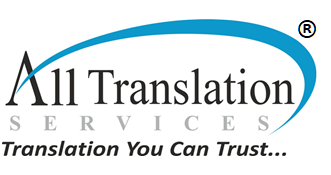Exploring the Linguistic Diversity of India: Common and Most Requested Languages for Translation
India’s linguistic tapestry is as intricate and diverse as its cultural heritage. With over 19,500 languages or dialects spoken as mother tongues, according to the Census of India 2011, the country embodies a rich mosaic of linguistic identities.
This diversity, while being a source of cultural richness, also presents unique challenges and opportunities, especially in the realms of communication, education, business, and governance. In this context, regional language translation services play a pivotal role in bridging language barriers, fostering understanding, and facilitating access to services and information across the country’s vast linguistic landscape. This blog delves into some of the most common and frequently requested languages for translation in India, highlighting their significance in various domains.
Hindi: The Lingua Franca
Hindi, an Indo-Aryan language, serves as the lingua franca of India. It is the first language of more than 40% of the Indian population and is extensively used in government, media, and education. Given its widespread use and official status at the national level, Hindi is among the most requested languages for translation services. Translations from English to Hindi and vice versa are particularly in demand, facilitating communication across different regions and linguistic backgrounds.
English: The Global Bridge
English holds a unique position in India, functioning as a subsidiary official language and a vital link to the global community. It is the primary language of higher education, judiciary, and national businesses, making it a crucial target for translation services. English translations are essential not only for international communication but also for accessing global markets, education, and technology.
Regional Powerhouses: Bengali, Telugu, Marathi, and Tamil
India’s regional languages, including Bengali, Telugu, Marathi, and Tamil, are not just mediums of everyday communication but also carry immense cultural and historical significance. These languages are predominant in their respective states, serving as official languages and playing a central role in education, governance, and media. Translation services in these languages are highly sought after for a range of purposes, from governmental documentation and educational materials to entertainment and media content.
Bengali: As the second most spoken language in India, Bengali translations are crucial for businesses and government initiatives in West Bengal and the neighboring regions.
Telugu: With a rich literary heritage, Telugu requires translation services for educational content, software, and film industries, given its prominence in Andhra Pradesh and Telangana.
Marathi: Marathi, the official language of Maharashtra, sees a high demand for translation in legal, administrative, and entertainment sectors.
Tamil: Known for its ancient literary tradition, Tamil translation is essential for historical research, education, and the booming film industry in Tamil Nadu.
The Rise of Digital Content: Punjabi, Gujarati, and Kannada
The digital revolution in India has led to an increased demand for content in regional languages, reflecting the country’s diversity in the digital space. Languages like Punjabi, Gujarati, and Kannada are witnessing a surge in requests for translation, particularly in digital content, e-commerce, and social media platforms. This trend underscores the growing need for services that cater to India’s linguistic diversity online.
The Importance of Translation Services
Effective regional language translation service provider are key to navigating India’s linguistic diversity, ensuring that language does not become a barrier to information, education, governance, and business. By providing accurate and culturally sensitive translations, these services play a crucial role in:
Promoting Inclusivity: Making information accessible in multiple languages fosters inclusivity and ensures that linguistic minorities are not left behind.
Facilitating Governance: Translation services enable the government to communicate effectively with citizens in their native languages, enhancing transparency and participation.
Boosting Business: For businesses looking to expand across India, translation services are indispensable in reaching out to customers in their preferred languages, building trust, and enhancing customer experience.
Conclusion
India’s linguistic diversity is a testament to its rich cultural heritage. As the country continues to grow and integrate into the global community, the demand for translation services across its myriad languages will only increase. These services are not just about converting text from one language to another; they are about bridging cultures, fostering understanding, and enabling access for all to the vast opportunities that India and the world have to offer.
Whether it’s through Hindi, English, regional languages, or the many dialects in between, translation services are the lifelines that connect the diverse linguistic threads of India, weaving them into a cohesive and inclusive narrative.
Top of Form
